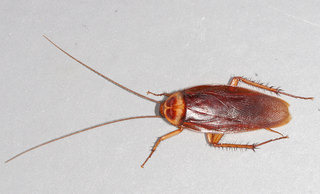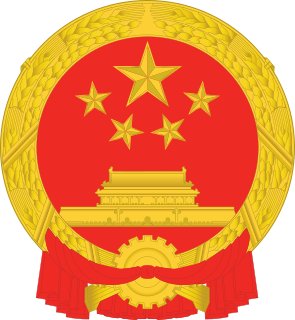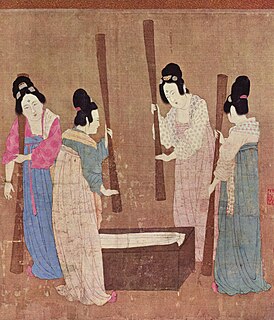 W
WChina primarily produces rice, wheat, potatoes, tomato, sorghum, peanuts, tea, millet, barley, cotton, oilseed, corn and soybeans.
 W
WAgriculture is an important theme in Chinese mythology. There are many myths about the invention of agriculture that have been told or written about in China. Chinese mythology refers to those myths found in the historical geographic area of China. This includes myths in Chinese and other languages, as transmitted by Han Chinese as well as other ethnic groups. Many of the myths about agriculture involve its invention by such deities or cultural heroes such as Shennong, Houji, Houtu, and Shujun: of these Shennong is the most famous, according to Lihui Yang. There are also many other myths. Myths related to agriculture include how humans learned the use of fire, cooking, animal husbandry and the use of draft animals, inventions of various agricultural tools and implements, the domestication of various species of plants such as ginger and radishes, the evaluation and uses of various types of soil, irrigation by digging wells, and the invention of farmers markets. Other myths include events which made agriculture possible by destroying an excessive number of suns in the sky or ending the Great Flood.
 W
WAgriculture in Macau is a minor industry in Macau, China. Around 2% of Macau's land is used for agriculture.
 W
WChina, with one-fifth of the world's population, accounts for two-thirds of the world's reported aquaculture production.
 W
WChunche is a Uyghur word that refers to a kind of building used to make raisins in Turpan, Xinjiang Uyghur Autonomous Region, China. The building has a dark interior, and the walls are covered with a large number of holes to allow wind to pass through and assist in the drying process through evaporation. Chunches are usually built in high, windy, areas due to the need for the wind.
 W
WCockroach farming is a specific type of insect farming that involves the breeding of cockroaches as livestock in controlled facilities. Such farming is a sizable industry in China where large buildings are home to millions of insects. They can be raised as a food source for humans (entomophagy) and as feed for animals such as lizards, or sold to the pharmaceutical industry for use in medicine. The cockroaches are often killed in vats of boiling water before being dried, and, depending on their purpose, they may be crushed, ready for processing. Prospective farmers are able to obtain "how-to" kits to begin their farming venture, while larger companies are able to produce billions of cockroaches every year.
 W
WCoffea arabica, also known as the Arabian coffee, is a species of flowering plant in the coffee and madder family Rubiaceae. It is believed to be the first species of coffee to have been cultivated, and is currently the dominant cultivar, representing about 60% of global production. Coffee produced from the robusta bean makes up most of the remaining coffee production. Arabica coffee originates from Ethiopia and was first cultivated in Yemen, and documented by the 12th century. Coffea arabica is called بُنّ in Arabic, borrowed from the Oromo "Buna".
 W
WCollective farming and communal farming are various types of "agricultural production in which multiple farmers run their holdings as a joint enterprise". There are two broad types of communal farms: agricultural cooperatives, in which member-owners jointly engage in farming activities as a collective, and state farms, which are owned and directly run by a centralized government. The process by which farmland is aggregated is called collectivization. In some countries, there have been both state-run and cooperative-run variants. For example, the Soviet Union had both kolkhozy and sovkhozy.
 W
WDazhai is a village and former commune of several hundred farmers in Xiyang County in eastern Shanxi province, chiefly known for Mao Zedong's directive, "Learn from Dazhai in agriculture", which set up Dazhai as the model for agricultural production throughout China during the 1960s and 1970s, amid the Cultural Revolution.
 W
WThe Five Grains or Cereals are a grouping of five farmed crops that were all important in ancient China. Sometimes the crops themselves were regarded as sacred; other times, their cultivation was regarded as a sacred boon from a mythological or supernatural source. More generally, wǔgǔ can be employed in Chinese as a synecdoche referring to all grains or staple crops of which the end produce is of a granular nature. The identity of the five grains has varied over time, with different authors identifying different grains or even categories of grains.
 W
WKalmyk cattle are a beef cattle breed originating in Mongolia and northwestern China and taken to southwestern Russia by migrating Kalmyk tribes in the early 17th century. They are now found in central Asia and Southern Russia on dry steppe pastures.
 W
WLiang Jun was believed to be the first female tractor driver in Communist China who later became a folk hero and model worker. She is depicted on the one yuan banknote of China's third renminbi series. She served as a politician, both provincial and national, and advisor on agricultural matters.
 W
WThe Liaohe Plain is a paddy plain located in the southern tip of Northeast China, apart of a greater Northeast China Plain. The Liaohe Plain is one of the most important industrial zones in Liaoning Province of China, and, with a cultivated land area of 144 million hectares, the Liaohe Plain rice field station's area of paddy-growing fields have increased by 977.1 square kilometers, located in the center, from 1988 to 2006.
 W
WThe Linpan in Chengdu Plain, also known as Linpan settlements, are traditional rural communities in the Chengdu Plain, Sichuan, China. They are characterised by small-scale farming, rectangular fields, and natural elements such as water, trees, and bamboo, all of which are supported by the ancient Dujiangyan Irrigation System. Linpan settlements adhere to traditional farming practices and culture, playing a crucial role in the preservation of the Chengdu Plain's natural environment. The main structures of the human environment include patches, corridors, and matrices, all of which contribute to the beauty and uniqueness of the Chengdu Plain's rural landscape.
 W
WThe Ministry of Agriculture (MOA) was an executive state agency within the government of the People's Republic of China. Its responsibilities were assumed by the Ministry of Agriculture and Rural Affairs on March 19, 2018. Areas of responsibility included agriculture and environmental issues relating to agriculture, fishery, consumer affairs, animal husbandry, horticulture, animal welfare, foodstuffs, hunting and game management as well as higher education and research in the field of agricultural sciences.
 W
WRice production in China is an important part of the national economy.
 W
WRural society in the People's Republic of China comprises less than a half of China's population and has a varied range of standard of living and means of living. Life in rural China differs from that of urban China. In southern and coastal China, rural areas are developing and, in some areas, statistically approaching urban economies. In northwest and western regions, rural society remains perceived as of a low standard and primitive. Basic needs such as running water and accessible transportation are a problem in these areas.
 W
WSericulture, or silk farming, is the cultivation of silkworms to produce silk. Although there are several commercial species of silkworms, Bombyx mori is the most widely used and intensively studied silkworm. Silk was believed to have first been produced in China as early as the Neolithic Period. Sericulture has become an important cottage industry in countries such as Brazil, China, France, India, Italy, Japan, Korea, and Russia. Today, China and India are the two main producers, with more than 60% of the world's annual production.
 W
WBombyx mori, the domestic silk moth, is an insect from the moth family Bombycidae. It is the closest relative of Bombyx mandarina, the wild silk moth. The silkworm is the larva or caterpillar of a silk moth. It is an economically important insect, being a primary producer of silk. A silkworm's preferred food are white mulberry leaves, though they may eat other mulberry species and even the osage orange. Domestic silk moths are entirely dependent on humans for reproduction, as a result of millennia of selective breeding. Wild silk moths are not as commercially viable in the production of silk.
 W
WThe well-field system was a Chinese land redistribution method existing between the ninth century BC to around the end of the Warring States period. Its name comes from Chinese character 井 (jǐng), which means 'well' and looks like the # symbol; this character represents the theoretical appearance of land division: a square area of land was divided into nine identically-sized sections; the eight outer sections were privately cultivated by serfs and the center section was communally cultivated on behalf of the landowning aristocrat.